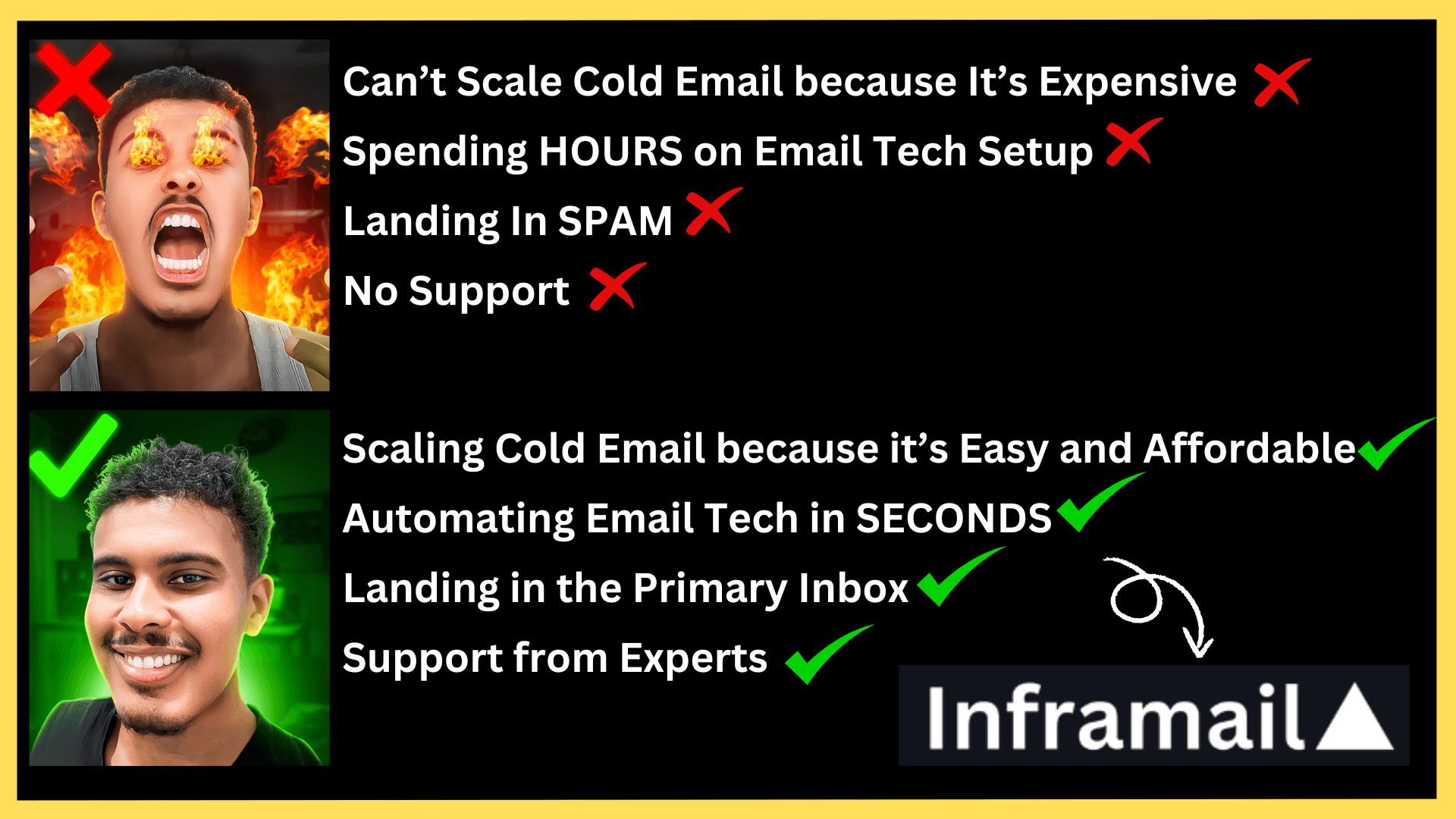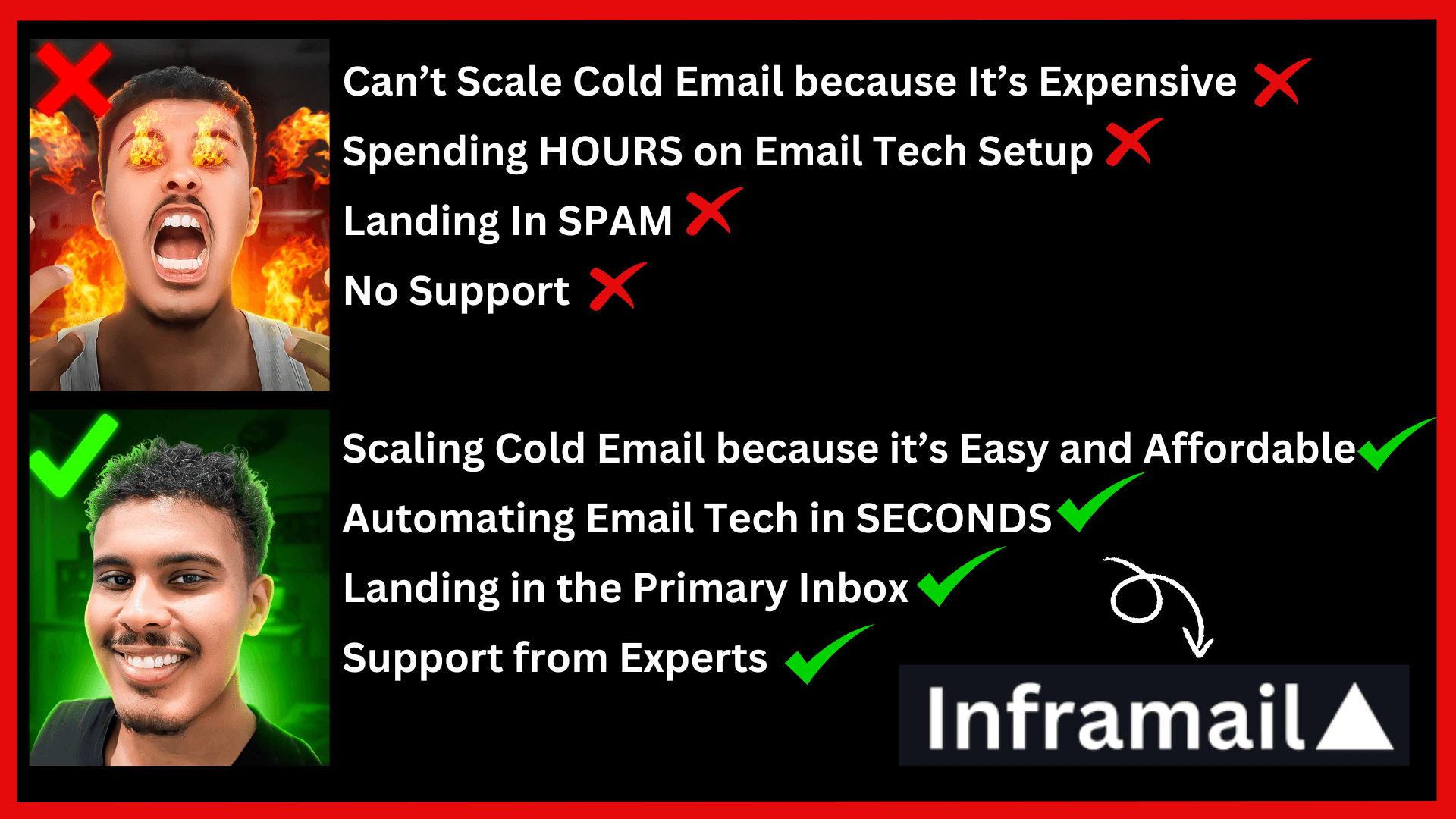Feb 25, 2025
What are B2B Leads?

B2B leads are contacts at businesses that are potential buyers of your product or service. They can be individuals or organizations. In either case, they’re qualified prospects that allow you to hone in on the right target audience for your sales efforts.
B2B leads aren’t just any contacts, though. There are different types of B2B leads that all have unique characteristics. Understanding the differences between these leads can help you qualify them and improve your chances of conversion.
B2B Leads vs. B2C Leads
B2B leads differ from B2C (business-to-consumer) leads, focusing on businesses rather than individual people. While B2C leads target everyday consumers, B2B leads focus on the companies that buy products and services to help them:
Operate
Improve
Grow
B2B leads can be much harder to find and qualify than B2C leads because they often require a more thorough understanding of the organization’s:
Structure
Decision-makers
Purchasing processes
Finding and converting B2B leads can also be challenging because many traditional lead generation tactics yield only generic contact information. For instance, if you executed a strategy and received a contact for “info@company.com,” reaching this email address with a cold message isn’t likely to yield results. The recipient is likely a generalized inbox that no one actively monitors. If you do connect with someone at the organization, they may not be the ideal target for your sales efforts.
Your sales team can only work with B2B leads that have a person at the other end of the line. That’s why generating leads isn’t enough—you need qualified leads from promising sources.
Different Types of B2B Leads
B2B leads are:
People
Organizations
businesses
They can become customers for B2B (business-to-business) products or services. Unlike business-to-consumer (B2C) sales, these leads are generally other companies rather than individuals. Specific personal contacts and self-led small businesses can occasionally be B2B buyers.
B2B sales leads aren’t necessarily harder to find than B2C leads, but they can be harder to qualify and convert. While B2C leads will always be individual people, B2B leads can be somewhat of a mystery. Most traditional B2B lead generation tactics only lead to general contact emails, and let’s face it, no one responds to anything sent to an info@company.com address.
Marketing Qualified Leads
Marketing qualified leads (MQLs) are potential leads identified by the marketing team as likely to purchase a product or service based on crucial target criteria. They are typically not ready to buy but have shown interest in the company. Perhaps they’ve subscribed to your website or downloaded gated content.
MQLs are passive leads (or outbound leads) that should be passed down the lead funnel for nurturing to determine whether they’re ready for a sales representative.
Sales Qualified Leads
A sales-qualified lead (or SQL) is an active lead (or inbound lead) that has directly engaged with your company and sales team in some capacity. They may have requested a demo, called your sales department, or sent an email/message indicating their interest in a particular product or service.
These leads are essential for B2B lead generation and must be followed up with. Any lead that reaches out to you before you reach out to them should be fast-tracked through your sales funnel. Treat your SQLs as a top priority, and your sales statistics will soar.
The B2B Lead Gen Process
While the lead generation process varies depending on the particular organization, industry, target audience, and more, B2B businesses generally follow these common steps:
1. Identify B2B leads
The organization must find contact information for leads by executing specific marketing and sales strategies. The identification phase usually falls on marketers’ shoulders and might include:
Developing gated content on the company’s website
Collecting company details via an interactive web tool
Encouraging a particular audience to subscribe to an online event
2. Begin outreach
With contact information in hand, marketers and sellers can begin reaching out to leads to evaluate their level of interest. They can do so by using cold calls and emails, LinkedIn, and other social media messaging or by replying to questions submitted on the company’s site.
3. Qualify leads
Of course, only some leads fit the profile of an ideal customer. To be truly qualified, a lead should (among other specific criteria) be ready and:
Willing to buy
Have the proper budget
Decision-making power
Have pain points that the seller’s products or services can solve
To determine the proper next steps, marketing should bucket leads into three separate categories:
Research/awareness
Consideration
Decision
Depending on where they fall on this spectrum, marketing or sales should select and share:
Appropriate content
Execute product demos
Conduct meetings with different decision-makers to move each lead through the pipeline.
4. Close leads
Once a lead purchase and the deal is closed, they officially become a customer. This can take several weeks or months to complete and requires:
Multiple conversations
Negotiations
Collaborative efforts from:
Marketers
Sellers
Buyers

Related Reading
• Automated Lead Generation
• Email Prospecting
• How to Warm Up Email Domain
• How Many Emails Can You Send Before Considered Spam
• Best Time to Send Cold Emails
• How to Cold Email
• Best Cold Email Templates B2B
• Email Outreach Best Practices
• Email Outreach Strategy
How to Generate B2B Leads

15 Strategies to Generate B2B Leads Fast
Experienced B2B sales managers and reps understand how difficult the process can be. B2B lead generation is about much more than creating alluring content that catches the interest of every passerby. Marketers and sellers must employ intelligent strategies that help them appeal to the right potential customers at the right time. Casting too wide a net will waste the company's time and resources and lead sellers down a fruitless rabbit hole.
But focusing all their efforts on the proverbial white whale (i.e., that ever-elusive, enterprise-level deal with a mega-budget) is just as risky since it ties up valuable time and resources that could be better spent pursuing multiple leads. A strong B2B lead generation process should leverage a variety of support strategies.
Here are 15 strategies your organization can use to take their lead gen efforts to the next level:
1. A/B testing and optimizing sales materials
There is no one-and-done secret to generating quality leads. Marketers and sellers must consistently tweak their approach to improve results. But it's equally important not to change too many things at once or too quickly, which will make it impossible to accurately measure what's working and what's not. The key here is to conduct A/B tests to find the sweet spot.
Set a baseline for a specific area of improvement (like email open rate). Your baseline in this instance, would be the current open rate. Test different variables at different times and measure their impact on the overall open rate. Some variables include subject lines, calls to action (CTAs), tonality, send schedules, and link sharing. Equally important is A/B testing sales copy and enhancing UX on the company's site, which are crucial for attracting leads.
Intelligent tools can speed up and make the testing and optimization process more effective. Some sales engagement tools, for example, use machine learning (ML) to identify what's working across teams so marketers and sellers can scale their lead-generation efforts easily. These technologies automate key sequences, making lead generation a more efficient process that yields positive results.
2. LinkedIn
Establishing genuine, timely connections on LinkedIn is a great way to get in front of leads, but getting it right requires some finessing. Sending out a generic InMail message blast to every potential lead likely won't get your team very far, but the platform is a precious lead gen tool when you engage with leads at a proven cadence over time.
LinkedIn Sales Navigator can help sellers properly identify and research decision-makers and connect with them at the right time. Some sales engagement tools offer integrations with Sales Navigator, so reps can access everything they need (and the ability to execute lead gen activities) in a user-friendly platform. This saves the time it would otherwise take to toggle between various apps to:
Research
Engage
Follow up with leads
Within their centralized workflows, sellers can find:
New contacts
View profiles
Send connection requests
Message leads
Ask a mutual connection for a warm introduction without ever leaving their engagement platform. The result is a more efficient sales lead gen engine with the power of LinkedIn at their disposal.
3. Referrals
A whopping 92% of buyers trust word-of-mouth recommendations from their peers; so its no secret that sellers bend over backward to build the trust and rapport required for a custom referral. In today's increasingly remote B2B sales landscape, referral selling is more valuable than ever, enabling sellers to attract high-quality leads without leaning on in-person interactions. This strategy is best used for larger accounts since it requires more resources to get it off the ground.
Sellers and marketers can identify strong referral opportunities by finding existing relationships across a few notable categories:
Internal employees
Partners
Board of directors
Prioritize those connections based on the strength of that relationship. From there, the teams can:
Coordinate
Organize
Execute on a referral request plan.
Modern sales engagement software eases the burden of this complex process using individual email templates and longer sequences. These enable referrers to send introductory emails and follow-ups with the click of a button.
4. Cold calls
Cold calling is a tried-and-true (albeit frustrating) strategy for generating sales leads. Most sellers cringe at cold calling, but the right tactics can make the process easier, faster, and more effective. In addition to leveraging some best practices like striking the right balance between quality and quantity, adopting a customer-centric mindset, using positive language, and verifying that they're speaking to the right decision-maker, sales teams should also use the right technology to take the pain out of cold calling.
For instance, an intelligent sales engagement platform can track when reps connect with leads and when they don't. The right tool can help sellers identify:
The best time to dial
Instantly identify and prioritize already-engaged prospects
Automatically flag high-priority calls
Reps can focus on what matters: making genuine connections with high-quality leads.
5. Researching customer needs
Nine out of ten B2B companies agree that account-based sales (ABS) is a practical approach to the sales process. The foundation of a successful ABS strategy includes deep research into customer needs, sales and marketing alignment, and a large library of custom-targeted content. ABS is highly scalable and replicable, so focusing your team's outbound lead gen approach on various decision makers at a particular company can help them convert more leads at a faster pace.
With ABS, all go-to-market teams play an important role for each lead in:
Researching
Creating
Identifying
Executing highly-personalized strategies
This enables them to collaborate, target, and reach key stakeholders at crucial phases of the sales process, which helps to convert those leads into customers to:
Customize content
Engagements
Messaging
A strong ABS program heavily depends on a high level of personalization, collaboration across departments, custom-built messaging, and more, and getting it right requires the right tools for support. Using a sales engagement platform, sales teams can build:
An impressive library of email templates
Call scripts
Other content
Then they can:
Curate
Categorize
Share that content across all relevant teams
That way, each individual within the go-to-market team has everything they need to develop effective messaging for every touch point.
6. SEO
Search engine optimization (SEO) has become a buzz-worthy phrase for salespeople and marketers alike, though many still need to start using it to their full advantage. Effective SEO helps get more eyes on a business's content and enables that business to demonstrate its knowledge in a particular space. For example, a B2B technology consulting company can drive more organic traffic to its website and generate more leads by creating optimized content that provides value to its intended audience. They might know that many customers are looking for holistic IT solutions that break down communication barriers and speed up operations.
So they start by conducting competitive keyword research around relevant phrases, like technology solutions for operations and how to improve communication in the workplace. Depending on each term's search volume and the search engine results on its surfaces, the company can build helpful, thoughtful content that serves the appropriate user need (or optimize their existing content for organic search). Over time, they'll amass a large library of fully optimized, helpful web content that shows potential buyers they're thought leaders and understand customer pain points, which appeals to leads looking for empathetic, knowledgeable solutions partners.
7. Email
Email marketing is a core element of lead generation and can be a valuable touchpoint in the sales cycle. Since 31% of salespeople say that sending one-to-one, customized messages is extremely effective, utilizing personalization throughout your email marketing campaigns can help generate better leads that turn into buyers. Thorough research into target accounts, social media, existing solutions, pain points, and more can help get the ball rolling on a winning email marketing campaign.
But to generate higher-quality leads at a break-neck pace, sales and marketing teams need powerful tools that help them measure the success of their personalization efforts and repeat them at scale. Sophisticated sales engagement tools go beyond traditional CRMs like Salesforce by accurately measuring buyer sentiment, which leads to an emotional response to an engagement. They can categorize reaction buckets to better inform the next steps into:
Positive
Rejection
Referral
Unsubscribe
The result is a sales team that better understands its leads and can tweak its communications to move deals faster.
8. Reviews, Social Proof, and Testimonials
Social proof refers to the theory that people will mimic their peers' behavior regarding the solutions they purchase. Because peer recommendations are undeniably influential in selling, highlighting social proof is a no-brainer for generating leads. There are countless techniques for implementing social proof, but some common tactics include:
Featuring customer reviews on your website
Filming and sharing customer testimonials on your site and social media pages (with the client’s permission).
Building case studies that demonstrate how your product or service has solved specific problems
Mentioning your work with similar businesses
9. Events and Webinars
Hosting webinars and events (both in-person and virtually) provides a unique opportunity to identify high-value leads offer in-depth information about your:
Industry
Company
Solutions
It also connects with potential buyers. When people sign up for a webinar or event, they pass along contact information while also acknowledging their interest in your organization and/or its offerings. Since webinars and virtually hosted events are relatively budget-friendly, they're often a cost-effective way to stir up interest and get a pulse on companies in the market for a new solution. Armed with their contact details (and the assumption that they either want to make a purchase or learn more), marketers can execute post-event follow-up to convert those leads to opportunities.
This step is infinitely easier with the right sales engagement technology, which can qualify leads, segment your audience, and determine whether they're ready to be contacted by sales or should continue to be nurtured by marketing for the time being.
10. Remarketing
There are countless reasons why a user might visit your site only to jump off the page. People get:
Distracted
Overwhelmed
Decide they're not ready to make a purchase
Start researching competitors.
With remarketing tools, you can target visitors who land on certain pages with highly relevant ads on another website. If, for example, a user lands on (then navigates away from) a field service management software solutions page on your site, you can advertise an ebook about why field service management software is essential on another site. This encourages users to revisit your content and warms them up before you even attempt to reach out.
11. Warm sales calls
Speaking of warm leads, implementing a warm sales call strategy can push potential buyers closer to the finish line. Your lead gen process should carefully note those who have already engaged with your content or with whom sales and/or marketing have already been in contact. Instead of letting them fall through the cracks, reps should call those warm leads as their free trial approaches expiration:
A week or so after they've downloaded a piece of gated content
A few days after, they attend a webinar
When they cancel a product demo
The right technology can help teams fire up those warm leads without wasting time digging for information on previous touchpoints, responses, and more. Intelligent sales engagement platforms track and store all this information in a centralized place, making it easy for reps to determine how best to proceed.
12. Press releases
Issuing a press release is a fantastic way to generate buzz around your company, your products or services, and even your social efforts. News sources, digital media firms, and social media influencers can publish and share your press release to drive traffic to your website and social media profiles. You'll want to save this strategy for essential moments to avoid turning potential leads off, so consider the press release play when you:
Launch a new product or service
Earn an industry award
Announce an important event
Unveil a new integration or partnership
Are directly involved in a merger or acquisition
Make clear, genuine contributions toward social or charitable initiatives
13. Free incentives
The word free tends to capture the interest of an audience, so why not use it to generate leads? Free incentives can mean many things, so choosing the right ones is crucial for helping your team reach the right potential buyers. For example, while offering a free pizza to the first 500 people who subscribe to your email list will undoubtedly get people to sign up, it likely won't generate high-value leads that fit your ideal customer profile - unless your company sells pizza.
A B2B technology solutions provider, for instance, will likely generate better leads by offering one of the following free incentives in exchange for a users contact info:
A downloadable guide for evaluating your existing tech stack
A user-friendly, interactive tool that calculates the ROI of digital transformation
A product demo
A trial for one of their basic SaaS solutions
The key here is to provide value that's directly tied to what your company has to offer
That way, you can be sure users aren't signing up strictly for an unrelated freebie and can more easily identify the interest level of those who choose to participate.
14. Diversified content strategy
As how buyers seek out, research, learn about and compare solutions evolve, so too must the types of content organizations create. While printing out product brochures and passing them out door-to-door may have been a practical approach for sellers in the past, today's B2B salespeople would likely find it hard to generate real leads using this same method. Today's purchasers consume various content before buying a product or service, so it only makes sense for marketers and sellers to mix it up to appeal to a broader audience. A healthy combination of these elements can help your team reach your intended audience wherever they are:
Ebooks
Blog posts
Emails
Social media posts
White papers
Press releases
Webinars, guides
Case studies
Video content
Podcasts episodes
Powerful sales engagement tools can even help your marketers and sellers determine the best time to share each type of content (based on buyer sentiment, historical data, etc.) and measure the recipient's response. Over time, your teams can make smarter decisions about which types of content yield the best results and which ones simply aren't worth the effort.
15. Chatbots
Chatbots, which are virtual assistants that typically communicate with human users through a website's interface, and invaluable tools for generating better-quality leads with less effort from your team. These savvy chatbots can categorize leads based on the information they provide and their questions. Suppose a user is interested in a demo. In that case, the chatbot can route them to the right resource or rep to answer if the customer has questions regarding a particular product or wants to understand better how your solutions can solve specific pain points; this increases the likelihood of conversion and gives your team a greater understanding of whos coming to the company website and what they're looking for.
16. Use Ongoing Content Campaigns That Outmatch Your Competition
B2B lead generation relies heavily on content marketing. But not just any content will do. Your content marketing campaigns to attract outbound leads are only as good as their practical search value. You might have the No. 1 spot on Google for “super special ooey gooey cheese fries” when typed in that exact order.
Still, if your target audience and your competitors are focused on searches for “best french fry creations,” then you’re not winning the competition. Even if your company only sells cheese fries, invest in optimizing your content about general French fry creations. Write white papers as a lead magnet, create videos, and publish blogs—then continue to track clicks and optimize accordingly. You don’t have to have the most unique content from your competitors; it just has to be the most clicked-on.
17. Collect Buyer Reviews
It doesn’t matter how honest your marketing department is. Buyers will always trust fellow buyers before they trust you. B2B lead generation still relies on finding influential individuals, and those individuals are reading buyer reviews. Ninety-five percent of consumers say they read reviews before buying anything, and ninety-four percent say they’ve avoided businesses due to negative reviews. Since reviews enormously influence lead engagement, you need to ensure they’re there in the first place.
How to Effectively Request and Leverage Customer Reviews for Maximum Impact
These days, no reviews can be just as harmful as negative reviews. Make solicitation for feedback, reviews, and testimonials a regular part of your sales process. If you’ve had a long-term relationship with a client, they’re usually more than happy to give a testimonial. Display those positive reviews front and center on your marketing materials to lure in new opportunities.
18. Get Survey Results
Most companies see surveys as a way to judge customer satisfaction and as indispensable tools for B2B lead generation. If your customers report that it takes too long to contact a representative, you shouldn’t just address that concern in your customer service department. Look at other places to increase communication so that leads are never waiting. There are so many ways you can improve:
Install a chatbot
Increase email automation
Simply expand your personnel
When you look at your company holistically, you can simultaneously solve problems for current and future clients.
19. Embrace Case Studies
Case studies are on the rise in B2B marketing and lead generation. Previously kept to the dark corners of company websites, they now rank third among the top-used content types in B2B sales (behind email newsletters and blog posts and tied with pre-produced short videos). Case studies now rank third in the top-used content types in B2B sales. B2B buyers love hard facts. B2B sales don’t just impact one person—they’re made to benefit an entire business. So, if you have cold, hard evidence, make sure people are seeing it.
20. Don’t Let Leads Escape Your Landing Page
People are naturally drawn to interactive content. Eighty-one percent of marketers agree that interactive content is more effective at grabbing people’s attention than static content. So, why are most landing pages still static? When leads click on your landing page, you must quickly grab their attention. Catchy headlines, clear CTAs, and large-font statistics help, but pop-up boxes do more.
A contact pop-up box on your landing page forces your prospect to engage with your content. Even if they simply close out the pop-up box, their attention is more specifically drawn to your site than to whatever else is happening around them. And that’s the worst-case scenario. In the best-case scenario, you grab an email from a lead by creating a box with a subscription entry form.
21. Personalize Your Web Content for Your B2B Lead Personas
B2B sales and marketing can no longer afford to be generalized. While mass emails and marketing automation are practical tactics, personalization is a secret weapon. B2B lead generation tactics are constantly evolving, and 2022 is the year of ABM (account-based marketing). With ABM, you can tailor your website and marketing materials to more personally appeal to individual leads or segments that you find the most promising. You can also code your website to key in on a visitor’s location via their IP address, which enables you to create different content for different geographical demographics. Personalization is always more effort, but since more than seventy percent of B2B marketers are doing it, you can’t afford not to.
22. Learn the Savvy Side of Social Selling
Social media isn’t just for companies targeting B2C consumers. As more and more businesses move into the social selling sphere, B2B lead generation now extends to B2B connections available on different platforms. You’re likely already posting and interacting on LinkedIn (and if you’re not, you should be: fifty-five percent of decision-makers use LinkedIn to vet other companies). But don’t stop there. Twitter, Instagram, and Facebook offer your team unique and casual B2B lead generation and interaction opportunities. Making your company appealing on social media doesn’t just attract amused scrollers but also other businesses who see that you know how to market.
23. Try Your Hand at Video Content
You don’t need to be an expert editor to create lead-generating videos. Even if all you put together is a video of different marketing graphics with some smooth jazz behind it, you’ll still have video content to put out online. And that’s essential. After Google, YouTube is the second-largest search engine on the web. Depending on the demographics of the businesses you want to work with, it might be the first place they turn to. Video content on YouTube can impact B2B lead generation in several ways.
Leveraging YouTube for Product Demonstrations and Competitive Edge
YouTube is a popular platform for detailed criticism and analysis of videos of different products, courtesy of individual users. But you’ll also find in-depth product videos and instruction guides your competition produces. You’re falling behind if your video content isn’t equally high quality. Let’s say a potential prospect is interested in accounting software but needs to ensure an online tutorial. If they search on Google, they’ll get mixed results, but if they search on YouTube, the companies with filmed tutorials will be prioritized. Videos let you stay at the top of the search no matter what platform your leads are on.
24. Ensure All of Your Content Is Optimized for Mobile Viewing
An alarming forty percent of consumers will turn to a competitor site after a poor mobile experience. That should motivate you to optimize your content for mobile viewing, but here are a few more numbers to persuade you: Seventy-three percent of mobile search devices trigger additional action and conversation. Mobile commerce accounted for twenty-three percent of online sales in 2021. Only thirty-five percent of businesses have a mobile-optimized site. That last statistic is vital. Suppose customers pay attention to which companies care to optimize for mobile, and only thirty-five percent of businesses are optimized. In that case, your company has a wide open window to impact traffic and B2B lead generation.
25. Web Visitor Identification
If you have the contact details of an account that has shown a demand for your product or services, they are considered a B2B lead. Companies come to your website daily. But not everyone downloads your whitepaper, asks for prices, or books a demo. Any company that visits your website is still interesting to you, though! They've already shown interest in your product. They just haven't engaged yet. The question is, how do you know who is visiting your website? The solution is called visitor identification! Some B2B lead generation tools reveal the IP address of your website visits and tell you which companies are in demand for your product.
How IP Tracking and Visitor Identification Can Boost B2B Lead Generation
This gives you B2B leads that you might otherwise have missed. Also, these tools often display other relevant company data, such as employees and contact details. IP identification and visitor tracking tells you exactly which of your pages are visited and how often. This allows you to easily prioritize the following steps and sales approach for how to get more B2B leads from your website visitors.
A real-life example of this is Brandcave’s success using Leadfeeder’s API. Offering creative services and user experience design for B2B technology companies, Brandcave wanted to boost the marketing flow of their Ashore product. By partnering with Leadfeeder, Brandcave could use fifty-plus filters to segment website visitors, create a custom feed of meaningful prospects, and add 200 new contacts in just one day.
26. Google Ads
In addition to general search engine optimization of your content, the strategic use of Google Ads has proven worth it. If your target customers search for specific topics or solutions to their problems, they will automatically find ads for your content, generating leads. Always include a link to the appropriate landing page for search engine marketing. This page will provide them with their sought-after insights and can consist of a form to fill out to access gated content.
We talked about gated content before, and as we mentioned, it can be things like whitepapers, checklists, or giving access to your price lists. A business email address is enough for a lead form. Of course, having as much information as possible from a lead is always helpful. But be careful; you don’t want your lead to be deterred when you ask them to fill in too much.
27. Find Out Who Is an Unsatisfied Customer of Your Competitors
Look for competitors offering a similar product. Are they priced higher, or is their solution less performant than yours?
28. Launch Channels for Partner Sales
Look for non-competing businesses with a similar customer base. For example, accountants or financial planners may have the same customers if you are a lawyer. Having connections with partners will get you more sales leads than your competition.
29. Get in as many conversations as possible
Relying solely on your website, blog posts, or videos for leads to learn about your business is dangerous. Sales is about building relationships, and you want to have as many honest conversations with your prospects as possible. For example, if a lead asks about a feature in an email, don't just offer a link to your website. Instead, answer their question and offer to jump on a quick phone or video call to walk them through the feature’s functionality.

Related Reading
• Best Cold Email Software
• How Long Should a Cold Email Be
• B2B Cold Email Response Rates
• How to Improve Email Deliverability
• Unlimited Email Hosting
• Email Testing Tools
• Best Email Deliverability Tools
• Sales Email Automation Tools
• Email Scraping Tools
• Best Sales Prospecting Tools
• Email Warm Up Tools
• Email Personalization Tools
• Mailscale Alternatives
• Mailforge Alternatives
Measuring the Effectiveness of B2B Lead Generation

Conversion Rates: The Key Metric for Effective B2B Lead Generation
Conversion rates are critical for measuring the effectiveness of B2B lead generation strategies. Effective B2B lead generation significantly improves conversion rates, ensuring more potential customers take the desired action. For instance, increasing sales from a targeted email campaign from 5% to 10% means that B2B lead generation efforts helped double the conversion rate.
Effective lead generation strategies:
Attract interested prospects
Boosting sales
Revenue by converting them into customers
With accurate data and personalized outreach, B2B lead generation maximizes the chances of turning leads into paying customers.
Return on Investment: Assessing the Profitability of Lead Generation Strategies
Return on investment (ROI) is a crucial metric to consider when evaluating the effectiveness of B2B lead generation strategies. Businesses can measure the money they make from lead generation to see if it's worth it. Positive ROI shows that resources for lead generation are resulting in more sales and revenue, making it crucial for business growth. Focusing on ROI helps companies find the best lead-generation tactics and improve their marketing efforts.
Businesses can enhance their lead generation strategies by analyzing data on:
Cost per lead
Conversion rates
Customer lifetime value
This analysis helps reduce acquisition costs and attract more qualified leads. This improves efficiency and maximizes profitability. It ensures that every dollar invested in B2B lead generation brings a big return for the company.
Lead Quality: Why It Matters More Than Quantity
High-quality leads are crucial for the success of any B2B company. These are potential customers who are genuinely interested in your products or services and are likely to become paying customers. By focusing on the quality of leads, you can ensure that your sales team is using their time and resources efficiently. This will result in more successful sales and overall growth for your business.
Having high-quality leads means targeting the right audience with a genuine need for your offerings. This increases the chances of converting them into customers and improves customer satisfaction and retention. By attracting high-quality leads, you can improve your marketing and gain loyal customers who support your brand.

Start Buying Domains Now and Setup Your Email Infrastructure Today
At Inframail, we are revolutionizing cold email infrastructure with unlimited inboxes at a flat rate.
We provide:
Microsoft-backed deliverability
Dedicated IP addresses
Automated technical setup
This helps customer outreach efforts efficiently like:
Agencies
Recruiters
SDRs
The main benefits of using our service:
Automated SPF, DKIM, and DMARC setup
Dedicated email servers for each user
16-hour priority support daily
Unlike traditional providers that charge per inbox and leave you wrestling with technical configurations, Inframail streamlines the entire process. We handle the complex infrastructure setup while you focus on reaching more prospects.
InfraMail provides the robust email infrastructure you need without the usual technical headaches and per-inbox costs, whether you're:
An agency looking to scale outreach
A recruiter connecting with candidates
An SDR driving sales
Start buying domains now and set up your email infrastructure today with our email infrastructure tool.

Related Reading
• Sendgrid Alternatives
• Amazon SES Alternatives
• Mailgun Alternatives
• Maildoso Alternatives
• Mailreef
• Cold Email Marketing Services
• Cold Email Services
• Lemlist vs Instantly
• Smartlead vs Instantly


